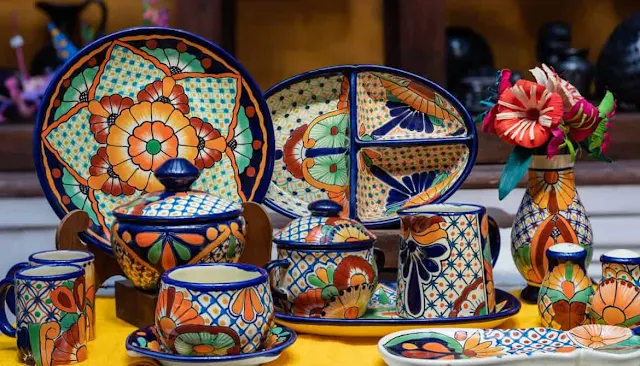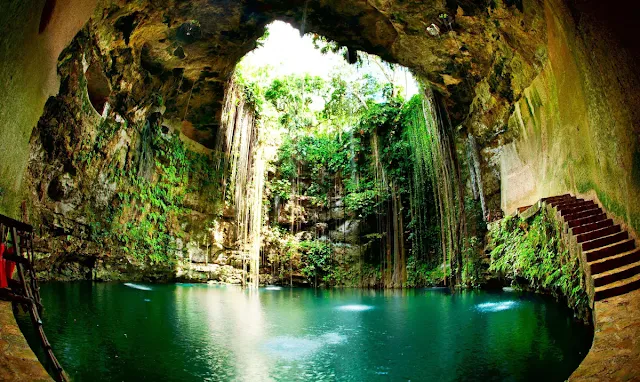Mexico, Mosaic of culture
Mexico: A Comprehensive Tourist and Cultural Guide
Introduction
 |
| Mexico city |
Mexico is a country with a rich tapestry of history, culture, and natural beauty. Nestled in North America, it is a land where ancient civilizations flourished, where colonial heritage merges with modern-day vibrancy, and where diverse ecosystems offer stunning landscapes, from deserts to tropical beaches. Mexico's influence extends globally through its cuisine, music, and art, making it one of the most culturally influential countries in the world. This article explores Mexico’s geography, history, culture, and economy, along with its most important tourist attractions.
Geography and Climate
Mexico is the third-largest country in Latin America, bordered by the United States to the north, the Pacific Ocean to the west and south, and the Gulf of Mexico and Caribbean Sea to the east. It spans an area of nearly 2 million square kilometers, encompassing diverse landscapes including deserts, mountains, forests, and coastlines.
Mexico's climate varies significantly due to its geographical diversity. The north is mostly arid, with deserts like Sonora and Chihuahua, while the south enjoys tropical and subtropical climates, especially in places like Yucatán Peninsula
and Chiapas. The central plateau, home to cities like Mexico City, has a temperate climate, making it an ideal area for human settlement for centuries.History
Mexico’s history dates back thousands of years, long before European colonization. The country is the birthplace of major ancient civilizations, including the Olmecs, Mayans, and Aztecs. The Olmecs, one of the earliest Mesoamerican cultures, are credited with developing the concept of writing and the calendar. Later, the Mayans thrived in southern Mexico and the Yucatán Peninsula, constructing impressive pyramids, such as Chichen Itza, one of the New Seven Wonders of the World. The Aztec Empire, based in Tenochtitlan (modern-day Mexico City), became the most dominant force in the region before Spanish conquest.
The arrival of the Spanish in 1519, led by Hernán Cortés, marked the beginning of over 300 years of colonial rule. The Spanish empire left a lasting influence on Mexican culture, language, and architecture. During this period, Catholicism became the dominant religion, and Spanish colonial cities such as Puebla and Guanajuato blossomed with European-style plazas, churches, and government buildings.
Mexico declared its independence from Spain in 1810, with figures like Miguel Hidalgo and José María Morelos leading the charge. The country's path to modernity was fraught with turmoil, including invasions, internal conflicts, and revolutions, particularly the Mexican Revolution (1910-1920), which shaped the political landscape of modern Mexico. Today, Mexico is a federal republic with a rich and complex history that continues to shape its cultural identity.
Culture and Traditions
Mexican culture is a blend of Indigenous, Spanish, and other influences, creating a unique and vibrant tapestry of traditions, art, and celebrations.
 |
| Talavera pottery |
Music plays a significant role in Mexican culture. Traditional forms include Mariachi, Ranchera, and Norteño, each rooted in the rural and working-class traditions of Mexico. Mariachi, often seen as the soundtrack to Mexican life, includes string instruments, trumpets, and romantic ballads. On the international stage, Mexican music has influenced many genres, from Latin pop to regional Mexican styles.
 |
| Teotihuacan |
Mexican Cuisine
Mexican cuisine is world-famous, recognized by UNESCO as an intangible cultural heritage. It combines indigenous ingredients such as corn, beans, and chilies with European elements like cheese and meats.
 |
| Mole |
Mexican cuisine is known for its bold flavors, colorful presentation, and diversity. From enchiladas to guacamole, it’s a culinary journey that represents the country's rich heritage.
Social Customs
 |
| Pozole |
Mexican society places a strong emphasis on family, with multi-generational households being common. Social gatherings, whether for birthdays, holidays, or religious events, often involve extended family. Hospitality is deeply ingrained in Mexican culture, with guests always treated warmly and with generosity.
Respect for elders is an important cultural value, and close-knit family bonds are at the heart of many social activities. In addition, Mexican people are known for their strong work ethic and communal spirit, often supporting one another through cooperative community initiatives known as tequio in rural areas.
Economy
 |
| Cozumel |
Mexico has a mixed economy, heavily reliant on industries such as oil, agriculture, and tourism. The country is one of the largest oil producers in the world, with Pemex, the state-owned oil company, being a key player. However, fluctuations in oil prices have affected the economy in recent years, prompting a shift toward diversification.
Top Tourist Attractions
- Chichen Itza
- Mexico CityAs the capital of Mexico, Mexico City offers a blend of the ancient and modern. Visitors can explore Chapultepec Park, visit the Palacio de Bellas Artes, or stroll through the vibrant neighborhoods of Coyoacán and Roma. The Zócalo, the city’s main square, is surrounded by historical landmarks, including the National Palace and Metropolitan Cathedral.
- TulumTulum, a coastal town in the Riviera Maya, is known for its spectacular Mayan ruins perched on cliffs overlooking the Caribbean Sea. It’s also a haven for beach lovers and eco-tourism enthusiasts.
- TeotihuacanOne of Mexico’s largest and most significant archaeological sites, Teotihuacan was once a major city of pre-Columbian Mesoamerica. The Pyramid of the Sun and Pyramid of the Moon are awe-inspiring structures that offer insight into ancient civilizations.
- Copper CanyonOften compared to the Grand Canyon, the Copper Canyon in northern Mexico is a series of six interconnected canyons that offer stunning views, hiking trails, and the opportunity to experience the indigenous Tarahumara culture.
- CozumelA top destination for scuba diving and snorkeling, the island of Cozumel is located off the Yucatán Peninsula. Its crystal-clear waters, coral reefs, and marine life make it a paradise for underwater explorers.
 |
| Copper Canyon |
Conclusion
Mexico is a country that captivates visitors with its blend of ancient history, vibrant culture, and stunning natural beauty. From the majestic ruins of the Mayan and Aztec civilizations to the bustling streets of Mexico City and the serene beaches of the Riviera Maya, Mexico offers something for every type of traveler. Whether you’re interested in exploring its rich history, sampling its world-famous cuisine, or simply soaking in its natural beauty, Mexico is a destination that promises unforgettable experiences.
References:
- "Lonely Planet Mexico" (2023 Edition)
- UNESCO World Heritage Sites in Mexico - www.unesco.org
- Mexican Tourism Board - www.visitmexico.com











No comments